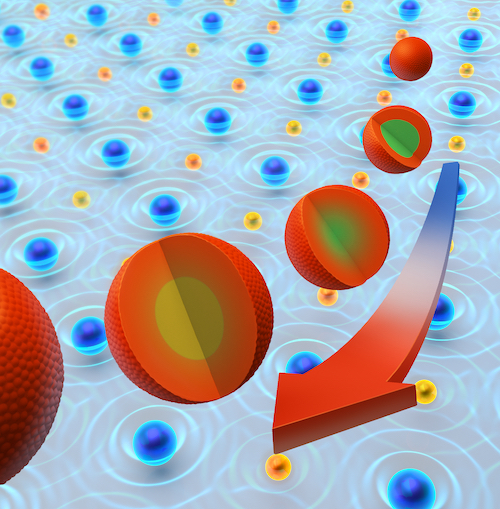
New paper: Quantification of Material Gradients in Core/Shell Nanocrystals
In this paper we quantify how steeply the material changes at the interface of graded core/shell nanocrystals. By using extended x-ray absorption fine structure spectroscopy we determine the coordination environment of one of the constituent ions. We show that cation diffusion is already strong at comparably low synthesis temperatures. At higher temperatures an ordered superlattice forms, which has not been reported before for these systems.
Core/shell nanocrystals with a graded interface between core and shell exhibit improved opto-electronic properties compared to particles with an abrupt, sharp interface. Material gradients mitigate interfacial defects and define the shape of the confinement potential. So far few works exist that allow to quantify the width of the gradient. In this study ZnSe/CdS nanocrystals with graded shells made at different temperatures are characterized using extended X-ray absorption fine structure (EXAFS) and Raman spectroscopies. The average coordination number of the probed element with respect to the two possible counterions is fit to a simple, geometric model. It is shown that at the lower temperature limit for shell growth (260 °C) substantial interfacial alloying can be attributed mainly to cation migration. At higher temperature (290 °C) strain minimization leads to atomic ordering of the metal ions and an anomalously low degree of phase mixing.
This paper hs been accepted for publication in Nano Letters.
